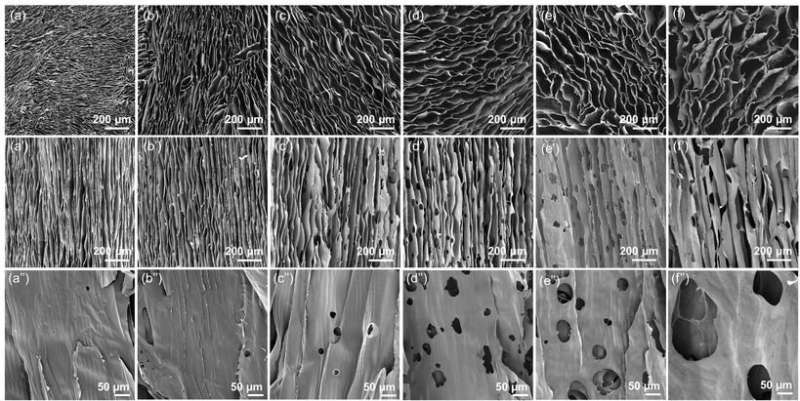This article has been reviewed according to Science X's editorial process and policies. Editors have highlighted the following attributes while ensuring the content's credibility:
fact-checked
trusted source
proofread
Sustainable and more efficient method for sound absorption and thermal insulation

Researchers at Aalto University have discovered a new way to use biowaste to provide sound absorption and thermal insulation.
An effective use of sound absorption materials is needed to reduce noise pollution, which constitutes a major environmental and health problem. The current sound absorption materials can be harmful for the environment and often create waste problems at the end of their lifetime.
The researchers found that pectin, a polysaccharide that can be extracted from biowastes such as fruit peels, can be converted into a freeze-dried highly porous material. They can outperform commercial sound absorption materials, such as glass wool and other porous materials with similar thickness. The research was published in the Chemical Engineering Journal.
"The porous material prepared in this work demonstrate the great potential of freeze-casted bio-based sound absorption materials to be employed as an alternative material in industrialization and construction, where environmental-friendly materials are needed. They also display low thermal conductivity and excellent thermal insulation performance," says Professor Jaana Vapaavuori from the School of Chemical Engineering.
The small pores on the walls of the bigger walls constituted a hierarchically porous material. This specific structure could increase the tortuosity (i.e., the path the sound travels inside the material) of the material, which further increases sound absorption, especially at the high frequencies. This type of structure has not been reported before in the context of bio-based acoustic absorbers.
"The material has a structural hierarchy consisting of pores of different dimensions and scales. This type of structuring allowed optimizing the sound absorption performance of the material—the sound can penetrate deep into material, and thus, the viscous and thermal losses in the materials are enhanced," says Professor Tapio Lokki from the School of Electrical Engineering.
Collaboration with a local store
The obvious benefit of collecting pectin from biowaste is that the researchers can make use of waste streams that are already being produced. The research team, led by professors Vapaavuori and Lokki are looking for opportunities to utilize locally-produced biowaste for their research.
"Now the work continues into an exploration of how raw material could be sourced directly from a local biowaste. We have been negotiating with a local K-market for waste exchange and a chance to collect the orange peels from their juice pressing machine," says Vapaavuori.
More information: Fangxin Zou et al, Maximizing sound absorption, thermal insulation, and mechanical strength of anisotropic pectin cryogels, Chemical Engineering Journal (2023). DOI: 10.1016/j.cej.2023.142236
Provided by Aalto University




















